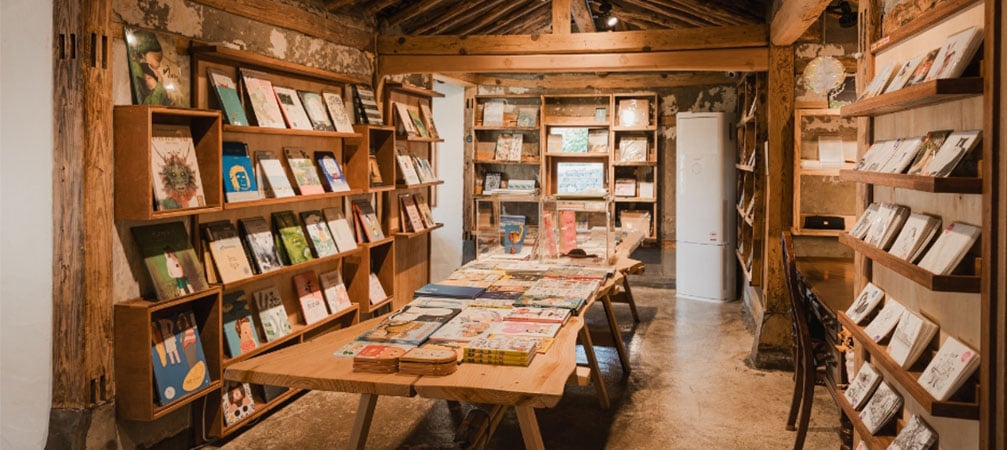- Log in
-
- Sydney Overseas Office
- London Overseas Office
- Toronto Overseas Office
- Los Angeles Overseas Office
- New York Overseas Office
- Ulaanbaatar Overseas Office
- Dubai Overseas Office
- New Delhi Overseas Office
- Manila Overseas Office
- Jakarta Overseas Office
- Hanoi Overseas Office
- Kuala Lumpur Overseas Office
- Singapore Overseas Office
- Bangkok Overseas Office
- Map
- Sydney Overseas Office
- London Overseas Office
- Toronto Overseas Office
- Los Angeles Overseas Office
- New York Overseas Office
- Ulaanbaatar Overseas Office
- Dubai Overseas Office
- New Delhi Overseas Office
- Manila Overseas Office
- Jakarta Overseas Office
- Hanoi Overseas Office
- Kuala Lumpur Overseas Office
- Singapore Overseas Office
- Bangkok Overseas Office
Details
-
Gyeongju History Walk: From Royal Tombs to an Ancient Observatory
-
472
-
0
2
This historical walking course winds through Gyeongju’s old downtown, taking you past ancient royal tombs, a traditional village, an ancient observatory, and a scenic night view spot. Beginning at the royal tombs, the route leads through legendary burial mounds and a serene hanok village before arriving at the ancient observatory once used for stargazing. The journey ends at a beautifully illuminated bridge, perfect for nighttime photos. This route provides a seamless way to experience Korea’s rich history and cultural heritage in a single itinerary.
Gyeongju
history_tradition
hanok
archaeological_site
night_view
photo_zone
-
icon
Gyeongsangbuk-do
Total distance: Approx. 7.4 km
-
-
Recommended Course
-
1
Gyeongju Tomb of King Muyeol, Stele of King Taejong Muyeol (경주 무열왕릉, 태종무열왕릉비)
The Tomb of King Muyeol is the burial site of King Taejong Muyeol, who led the unification of Silla. Known for his exceptional diplomatic strategy, he forged key alliances with neighboring powers and played a pivotal role in uniting several kingdoms on the Korean Peninsula. The tomb is notable for its stele inscribed with his name, making it one of the few Silla royal tombs with a clearly identified occupant.
-
2
Gyeongju Five Royal Tombs (경주 오릉)
According to historical records, this site is believed to be the burial place of four early Silla kings and one queen. A well-known legend also tells of Park Hyeokgeose, the founder of Silla, whose body is said to have split into five pieces after his death. According to legend, when people tried to bury the pieces together, a giant snake appeared and blocked the attempt, so the pieces were buried separately. That is why this site is called Oreung (五陵), meaning “Five Royal Tombs.”
-
3
Gyeongju Gyochon Traditional Village (경주 교촌마을)
This village features well-preserved hanok houses, including the historic residence of the Gyeongju Choi Clan, known for their longstanding tradition of noblesse oblige. Visitors can admire the beauty of traditional Korean architecture in a tranquil setting and enjoy hands-on cultural experiences such as trying on hanbok and sampling local cuisine.
-
4
Cheomseongdae Observatory (경주 첨성대)
Cheomseongdae Observatory is the oldest surviving astronomical observatory in East Asia and a key monument that reflects the scientific sophistication of the Silla Kingdom. It was used to observe the movements of the sun and stars, and its unique structure—with a central window and open top—is believed to have helped track the seasons and solar terms.
-
5
Woljeonggyo Bridge (월정교)
Woljeonggyo Bridge, originally built to connect the royal palace and surrounding villages during the Silla period, has been faithfully restored using traditional wooden construction techniques. At night, the bridge is beautifully illuminated, creating a romantic ambiance that makes it one of Gyeongju’s most iconic nightscape spots. The stepping stones in front of the bridge also offer a perfect photo spot with the bridge as a stunning backdrop.
-
-
map
-
Recommended travel tips

Sosomilmil Book Café
Set in a traditional hanok with a spacious courtyard, this book café offers a serene retreat where visitors can relax with a good read. The shelves are lined primarily with picture books and children’s stories, making it enjoyable even for those who don’t read Korean. The café’s specialty is pour-over coffee, available in three different bean varieties to suit your taste.
* VISITKOREA does not guarantee the quality of products or services introduced on this page and is not responsible for any direct or indirect loss resulting from use of said products or services.
Did you like this course? Leave a rating!










